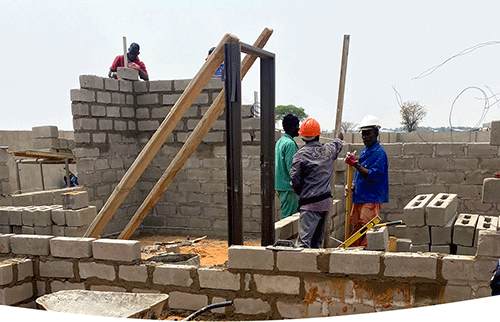Maihapa Ndjavera
Namibia’s construction sector is projected to remain in contraction during 2022 before recovering to growth in 2023. The sector is expected to contract by 2% in 2022 before expanding by 2.5% in 2023. This is according to the Bank of Namibia’s February economic outlook, which stated the projected contraction in 2022, is a moderation from a deeper contraction of 19.2% in 2021, and marks the seventh year of consecutive contractions for the sector.
“The estimated contraction in construction for 2021 was increased to 19.2% from an earlier estimate of 11.5% contraction. The adjustment to construction growth was informed by much lower construction activity from both government and private sector,” the BoN report stated.
Furthermore, the Namibian economy is estimated to have recovered moderately during 2021 and is projected to improve further during 2022 and 2023, supported by better growth for the mining industry and most tertiary industries.
The central bank noted domestic economic growth is estimated at 0.9% for 2021 and is expected to improve to 3.4% in 2022 and to 3.7% in 2023. The 2021 growth estimate was revised down from 1.5% published in the December 2021 economic outlook update, largely reflecting lower performance for sectors like non-metallic mineral products, construction, wholesale and retail trade as well as financial services.
As per the outlook, risks to domestic growth remain dominated by the impact of the Covid-19 pandemic, but also include swings in rainfall patterns as well as high prices for energy products such as fuel and gas and supply disruptions around the world.
“Risks to domestic growth are dominated by possible new waves of the pandemic, vaccine hesitancy, supply chain disruptions and the slow pace of vaccinations in Namibia. The first sub-variant of Omicron (BA.1) has led to tighter travel restrictions at the end of 2021, especially affecting southern African countries. The second sub-variant of Omicron (BA.2) spreads faster than the first variant and is prevalent in countries such as the UK and Denmark,” reads the update.
As one of the most affected sectors by the pandemic that contracted by 31.2% in 2020, the hotels and restaurants sector is projected to rebound in 2022 and 2023 after an estimated recovery in 2021.
“The hotels and restaurants sector is projected to grow by 4.8% and 6.3% in 2022 and 2023, respectively, which represents a slowdown from 8.4% growth in 2021. Growth in this sector is mostly driven by activities linked to local and international travelling,” BoN stated.
The hotels and restaurants sector’s 2021 growth estimate was revised upward to 8.4%, from 1.7% in the economic outlook update for December 2021. This revision was based on increased international arrivals, as well as room and bed occupancies during the fourth quarter of 2021. -mndjavera@nepc.com.na


